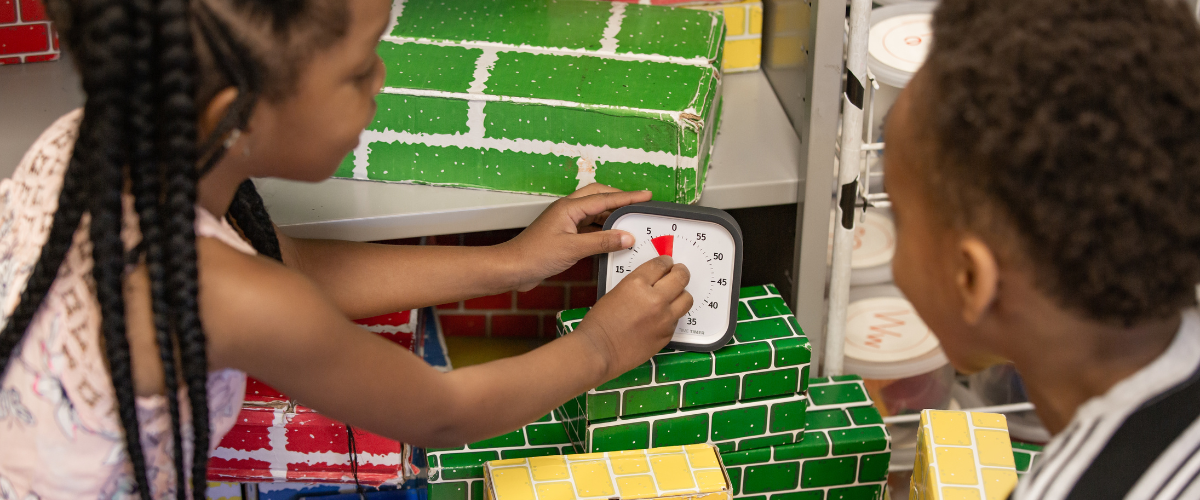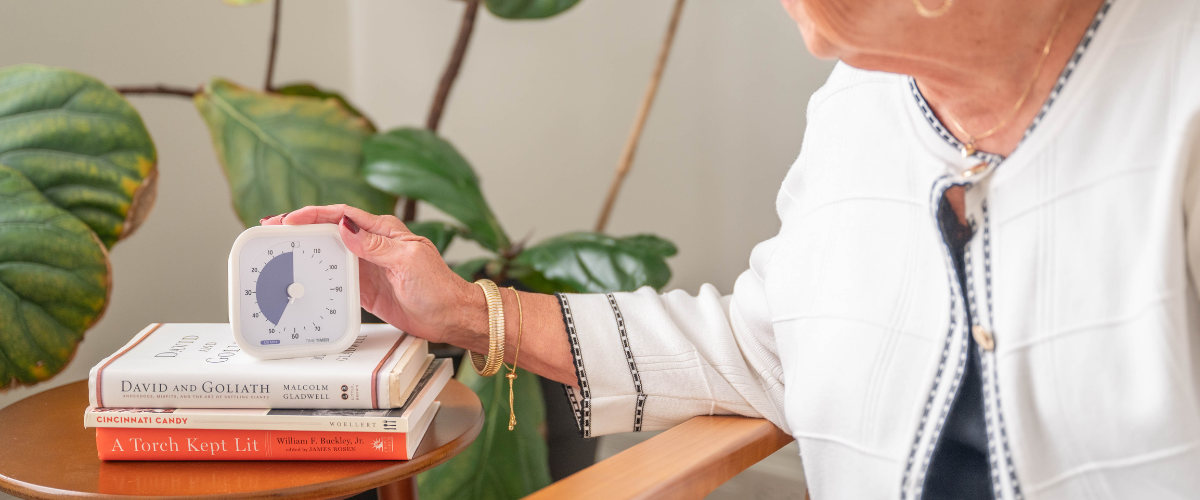The Time Timer App helps users structure their day for better time management.
One of its most useful features is the ability to create Groups, allowing you to sequence multiple timers together for a seamless daily schedule.
In this guide, we'll walk through the process of creating custom daily schedules using the Time Timer App, with specific examples for a professional, a teacher, and a young child.
How to Create a Daily Schedule Using Groups
-
Tap the "Groups" item on the menu.

-
Click "+ Add Group".

-
Name your group (e.g., "Workday Schedule" or "School Day") and make other customizations, such as timer colors.

-
Tap "+ Add Timer" to include individual timers in your group.

-
Arrange the timers in the desired sequence by dragging and dropping.


-
Save your group when you're finished.
Now that you know the basics, let's explore some specific examples of daily schedules you can create using the Groups feature.
Example 1: Professional's Daily Schedule
For a busy professional, time management is essential to balance work tasks, meetings, and personal well-being.
Here are some timers that one may include in a workday schedule:
-
Email and planning (20 minutes)
-
Team meeting (60 minutes)
-
Work block (90 minutes)
-
Admin tasks (30 minutes)
-
Client check-in (60 minutes)
-
End-of-day review (15 minutes)

Pro Tip: Use vibrant colors for high-energy tasks and calming colors for breaks or planning sessions. This visual cue can help you mentally prepare for each activity.
Example 2: Teacher's Daily Schedule
Teachers juggle multiple subjects, administrative tasks, and student interactions throughout the day.
Here's an example of custom timers to group in a schedule for a middle-school teacher:
-
Preparation Time (30 minutes)
-
Homeroom (15 minutes)
-
Class 1 (50 minutes)
-
Quick Break (5 minutes)
-
Class 2 (50 minutes)
-
Lunch-and-recess duty (45 minutes)
-
Class 3 (50 minutes)
-
Planning Period (45 minutes)
-
Class 4 (50 minutes)
-
Parking-lot duty (30 minutes)

Pro Tip: Create sub-groups for each class period to break down lesson components (e.g., warm-up, instruction, practice, wrap-up). This allows for more detailed time management within each subject.
Example 3: Young Child's Daily Schedule
For young children, visual timers can help establish routines and reduce anxiety about transitions.
This can be especially helpful for neurodiverse children that may struggle with time perception or feel driven to establish routines.
Here are examples of timers to fit into the schedule for a young child:
-
Wake up and get ready for school (30 minutes)
-
Homework (90 minutes)
-
Playtime (90 minutes)
-
Dinner (30 minutes)
-
Studying (45 minutes)
-
Bedtime Routine (30 minutes)

Pro Tip: Use custom images or icons for each timer to help non-readers understand the schedule. For example, a sun for wake-up time, a plate for meals, or a ball for playtime.
Tips for Making the Most of Your Time Timer App Daily Schedule
-
Start Small: If you're new to structured scheduling, begin with a few key activities. Then, gradually build up to a full day's worth of timers.
-
Be Flexible: While routines are helpful, allow for some flexibility. You can pause or skip timers as needed. In other words, plan for a little bit of unpredictability in your daily life.
-
Review and Adjust: Regularly assess your schedule and make adjustments. Find out what works best for you or your child.
-
Use Custom Sounds: Choose sounds that motivate you or create a calming atmosphere, depending on the activity.
-
Sync Across Devices: If you have the Time Timer App on multiple devices, sync your groups to maintain consistency.
-
Combine with Other Features: Use other Time Timer App features like for focused work sessions or custom timers for specific projects.
-
Visual Cues: Take advantage of the app's visual representation of time passing. This can be especially helpful for children or individuals with time-perception difficulties.
-
Set Reminders: Use the app's reminder feature to alert you before a transition, helping you prepare for the next activity.
By leveraging the Groups feature in the Time Timer App, you can create a customized daily schedule. This can help boost productivity, lower stress, and help users achieve a better work-life balance.
Whether the user is a busy professional, a dedicated teacher, or a parent helping a child develop good habits, the Time Timer App provides an adaptable and user-friendly solution for effective time management.
Remember, the key to successful scheduling is finding what works best for the user. Experimenting with different configurations, durations, and visual cues can help a user find the perfect balance.
With consistent use, users can discover the power of visual time management in improving their daily routine and overall quality of life.





